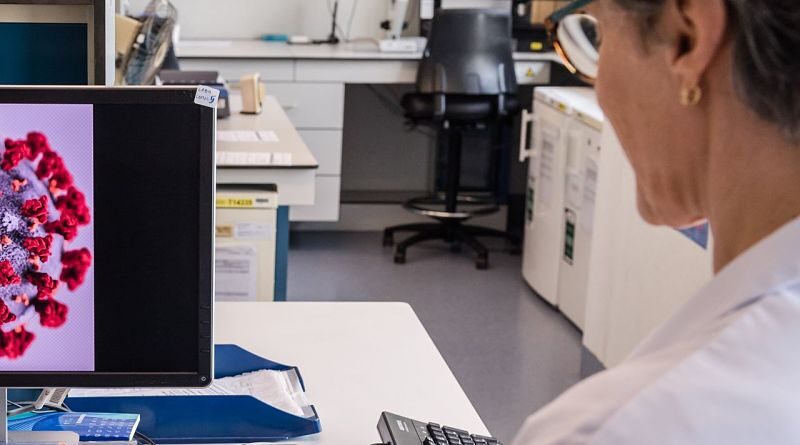COVID-19 and its impact on health IT resources
By Robert Rowley, MD Family Medicine Physician & CMO at Hayward Family Care

The emerging COVID-19 pandemic has become a once-in-a-century challenge that has impacted society profoundly and has disrupted almost every facet of life for people around the world. The demands on the infrastructure of health information technology (Health IT) are numerous, as we learn to use the tools we have created to address the issues we are facing now.
I wanted to review three key areas where health IT is being leveraged to address several facets of the pandemic response:
- Moving ambulatory care to an increasingly virtual environment.
- Developing reliable regional registries to coordinate needed resources, such as testing, ventilator availability, personal protective equipment (PPE) supplies, etc.
- And using Artificial Intelligence (AI) to analyze data already at hand to find best practices and treatments at the point of care.
Increasing use of virtual care environments
In most areas where work-from-home and social distancing have become prevalent, and especially in areas where shelter-in-place orders have been issued, the nature of ambulatory care has dramatically changed. In primary care practices, many have developed protocols that evolve day-by-day, but generally fall into the following workflow:
- Reschedule all elective visits, such as annual wellness exams, to later in the year;
- For those whose needs cannot be postponed, attempt to set up virtual visits;
- For those who are unable to do virtual visits, then they are seen in the office.
Some practices, such as non-trauma orthopedics, are unable to find operating room availability, and their practices have ground to a halt. The result of this has been a dramatic and sudden decrease in office volume – 5 or 6 virtual visits in a day, plus one or two in-person visits, in the place where a practice used to be 20 visits per provider per day, is not economically sustainable, especially for small and independent practices.
Many electronic health records (EHR) systems have an added feature to do video visits, but not all do. Historically, the use of such technology has been only a trickle, primarily driven by payer coverage of such visits. In the recent times, this has changed rapidly, and payment for such visits on a par with in-office visits has removed the disincentive for practices to use such resources. Our practice participates in a network of a few thousand regional independent practices, and the use of video visits has spiked by two orders of magnitude in the first three weeks of March.
Practices that use EHRs which cannot do in-system video visits have to find separate stand-alone systems that can accomplish the task. Despite some casual comments about using Facetime and Skype for such visits, these methods are not HIPAA compliant and run the risk of HIPAA breach when used. There are other platforms, in-EHR and stand-alone, which are HIPAA compliant and should be the methods used.
With the rise in use of virtual ambulatory care, there is an increased bandwidth burden on the system. Coupled with increased bandwidth demands from households that are now stay-at-home, such as work-from-home, teleconferencing, entertainment streaming services, online shopping, etc., the bandwidth burden may result in internet slowdown. However, for ambulatory medical practices doing more video visits, there is an offset of reduced overall visit volume. The carrying capacity of the internet does not seem to have been exhausted as yet.
Regional networking to coordinate resources
In regional areas, such as the San Francisco Bay Area, efforts to coordinate resources have emerged, involving numerous stakeholders – CIOs and CMIOs at hospitals and delivery networks, and CMOs at technology companies.
Such initiatives have included developing real-time registries of availability of COVID-19 testing, given that these resources are changing day by day. Capacity issues exist, making obtaining testing materials difficult, and limited laboratory capacity in performing these tests means slowed response times for reporting results. But the supply availability and testing capacity are changing daily, so real-time, single-source-of-truth dashboards are needed, and many in technology are developing this. The needs are regional, not local, given the mix of services emerging – public health laboratories, emergency department hospitals, universities, commercial laboratories such as Quest and LabCorp, some physician offices, drive-through test options, and even the emergence of the collection at home. All these mixed efforts can be chaotic, not strategically, and efficiently deployed unless there is a regional coordinated effort. These are bottom-up initiatives, more than top-down, growing out of needs “in the trenches.”
Supply chain issues around personal protective equipment, availability of nursing resources for ventilators, the availability of ventilators in the first place, are all matters where resource coordination is similarly emerging. Local initiatives, such as converting operating rooms (since few elective surgeries are taking place) to Intensive Care Unit (ICU) beds with respiratory support, are ideas and experiences which are being shared through health IT networks.
Using AI to find best-practice treatment strategies
There is a tremendous opportunity for using AI to identify treatment options that work best. The standard of care in medicine has relied on the classic double-blind prospective study, where subjects are recruited to meet study criteria, then subjects are grouped to blindly receive either the treatment-under-study or placebo and the results followed over time. It’s a lengthy process. The spread of COVID-19, where the virus is infectious days before symptoms first appear, and which seems to be spread easily, given that it is novel and no one has immunity to it yet, makes such a process important but not fast enough.
AI looks at patterns in the data at hand. It is by nature, retrospective, and is not necessarily affected by study design biases. With sufficient data to analyze (the worldwide data is accumulating rapidly), AI can identify the risk of severe illness, and risk of death, based on observation of demographics, co-morbidities, and other medications taken. Anecdotal reports of successes can be tested – for instance, the report of the benefits of chloroquine (a malaria drug) for reducing respiratory failure risk has become a pop phenomenon. It has resulted in a run on chloroquine at local pharmacies, and an indefinite back-ordering due to supply chain and manufacturing capacity issues. Other remedies using influenza treatments or HIV treatments, alone or on a combination, have been tried, again with anecdotal reports. To make sense of all this, AI can help deliver sane, observational best-practices recommendations that can guide health care delivered at the point of care. And do it quickly.
Conclusions
The global impact of COVID-19 is unprecedented and has disrupted almost every facet of daily life. Healthcare delivery is significantly impacted in its response to this pandemic, and the health IT infrastructure is an integral part of this response. Many tools already in place, such as video visits, are ramping up in their usage at a dramatic pace. Regional registries of resources, updated on a real-time basis, are necessary for an environment that changes day by day, even hour by hour. Leveraging AI algorithms already available and applying it to data available from around the world may well result in creating science-based, consistent best practices recommendations. We have the tools, we are learning how best to use those tools, and need to ramp up quickly.




Pingback: Телемедицина и интеграция медицинской среды